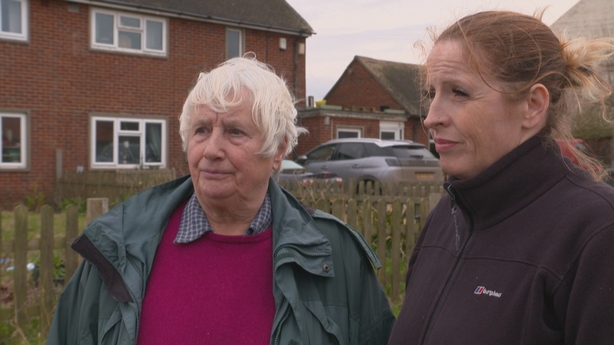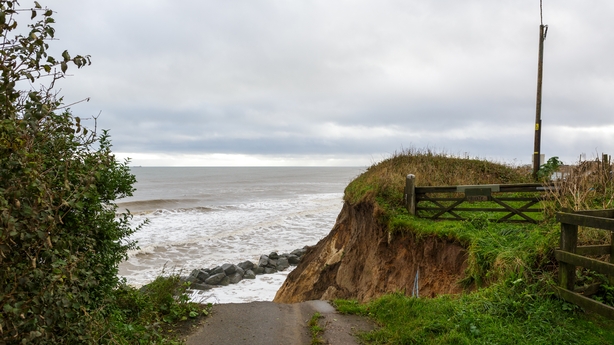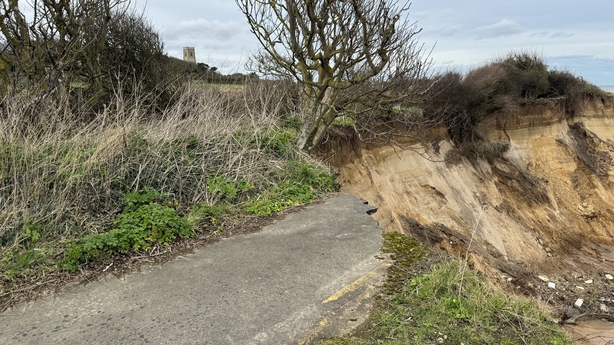UK village faces cliff edge over coastal erosion

Residents of a village in Norfolk, England have been told that their homes will fall into the North Sea, possibly within months.
The householders in Happisburgh are one of a number of communities on England’s east coast facing the problem of coastal erosion, which has been accelerated because of climate change.
Estimates of the total number of homes in danger range from 2,500 to 7,000 over the coming decades.
But Happisburgh is experiencing the most dramatic loss of coast.
The ground is going at a rate of ten metres a year and sudden subsidence can lead to a dramatic loss of ground overnight.
Nicola Bayless’ home is now close to the cliff edge and she said the house shakes at night with the cliff falls.
For her neighbour, Bryony Nierop-Reading, it is the second time she has faced the loss of a home to erosion.

She had been living on a site that is now out at sea when storm surge in 2013 left her bungalow partially dangling over a cliff.
Both her and Ms Bayless thought their present homes were at a safe distance.
A total of 34 homes and a road near their houses have been lost in recent years.
“It makes me very, very angry that governments have done nothing whatsoever to protect our land, to protect our farmland, to protect our special places like the lighthouse, the church, the pub,” said Ms Nierop-Reading.
“I don’t know where I’m going next. The future’s not very clear.”
Neither believe any financial help from the government will be enough to cover the cost of a new home.
Ms Bayless said she is resigned to having to take out another mortgage after paying off the original one.
“It’s frightening I don’t really want to move out of my home. This is the place I settled to bring my children up, which I have done, but I was hoping that they would be able to bring their grandchildren here and it’s not going to happen.

“It’s just, I don’t know where I’m going next either. The future’s not very clear.”
Professor Robert Nicholls of the climate adaptation department in East Anglia University said rising sea levels have led to around a 40% increase in the rate of erosion.
He said that in the UK there is no right to be protected against flooding or erosion.
The government makes a “cold” cost-benefit analysis and in the case of Happisburgh, the only viable option was considered to be a “graceful retreat”, he said.
Photographer Stuart McPherson has been documenting the erosion since 2009.
He estimated that around 120 metres of land has been lost to the coast in that time.
“Every time I come here it’s different. A little bit more has disappeared and you sometimes feel like you’re the last person to oversee that part of the British Isles.”

The British government has set up a trial £36 million programme to help the communities worst effected by coastal erosion which are in North Norfolk and East Yorkshire.
Although details are still being worked out, it is thought that householders will get some financial help towards relocation.
The problem of coastal erosion on the east coast of England has been going on for centuries.
A study in 1912 listed 29 villages in Yorkshire that had been lost since Roman times.
Happisburgh used to be inland from the parish of Whimpbell which was lost to the sea along with the villages Eccles and Shipden.
St Mary’s, a medieval church at Happisburgh which is Grade I listed, will be lost within 50 years.
The local council admits it does not know if anything can realistically be done to save it.





